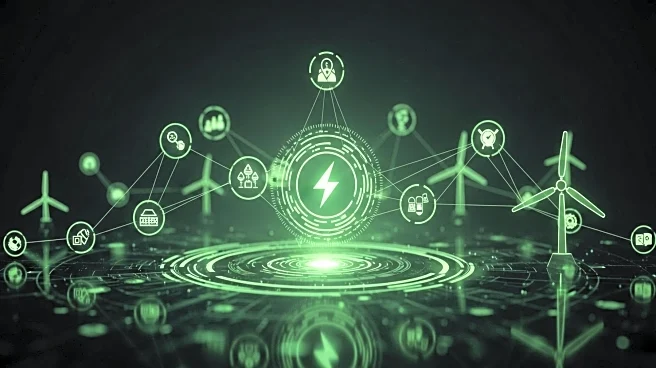What is the story about?
What's Happening?
Renewable energy is projected to account for 91% of global electricity by 2050, with solar photovoltaics and wind energy leading the forecast. The International Renewable Energy Agency (IRENA) highlights the need for large-scale renewables projects and the connection of large consumer loads as priorities for the energy transition. Despite the record addition of around 582 GW of new renewable power capacity in 2024, achieving the global target of 11.2 terawatts of renewables capacity by 2030 requires addressing major gaps. Infrastructure development and inefficiencies in power grids remain challenges to meeting electricity demand and energy transition goals.
Why It's Important?
The shift towards renewable energy represents a significant transformation in the global energy landscape, with implications for energy security, climate change mitigation, and economic development. The transition could reduce reliance on fossil fuels, decrease greenhouse gas emissions, and promote sustainable development. However, the challenges in infrastructure and grid development could hinder progress, requiring substantial investment and policy reforms. The U.S. energy sector may need to adapt to these changes, potentially affecting energy prices, job markets, and technological innovation.
What's Next?
To achieve the ambitious renewable energy targets, countries will need to invest in infrastructure upgrades, streamline permitting processes, and address supply chain constraints. Market reforms, workforce upskilling, and de-risking investment are crucial steps to overcome barriers. The U.S. may see increased collaboration with international partners to share best practices and technologies in renewable energy deployment.
Beyond the Headlines
The transition to renewables raises questions about energy equity and access, particularly in developing regions. It may also lead to geopolitical shifts as countries with abundant renewable resources gain influence. The cultural shift towards sustainability could impact consumer behavior, corporate strategies, and public policy.
AI Generated Content
Do you find this article useful?














